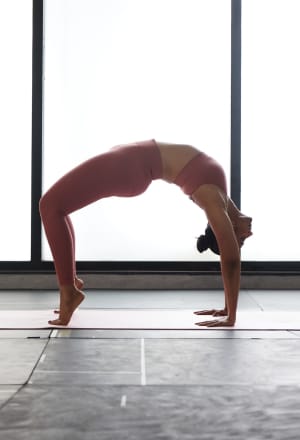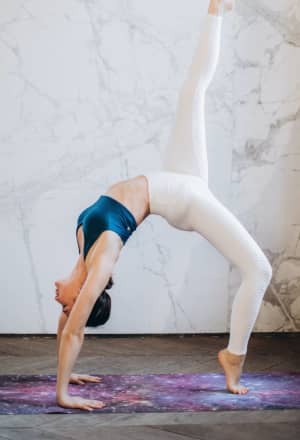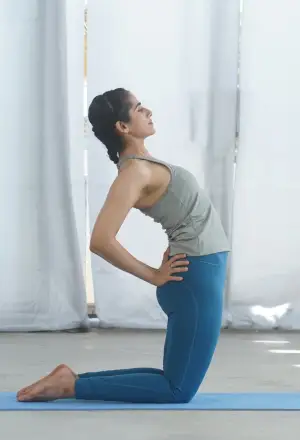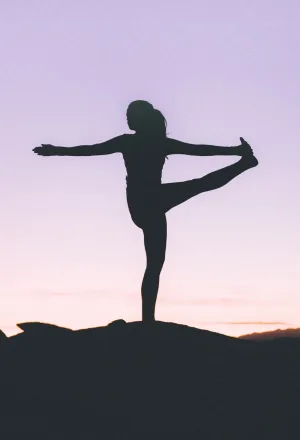Yoga for Strength
This hatha yoga for strength series will focus on enhancing physical strength required for everyday activities.
What is Yoga for Strength?
The yoga postures that help strengthen the major muscle groups like core, arms, back, and legs are known as yoga for strength. Dynamic yoga styles are best for strength training and are equivalent to a lot of weight lifting exercises. Yoga for strength and flexibility is also the best morning yoga as it tunes and activates all the muscles to keep working all through the day.
What is Yoga for Strength Exercises?
The postures that help to hold the body balance are known as yoga for strength. Regular practise of these exercises will strengthen the muscles of the arms, back, legs and core. Furthermore, all the yoga exercises for strength will improve sleep, boost metabolism and increase brain health.
What Causes Lack of Strength?
The common factors that cause lack of strength are:
Anaemia
Poorly managed health conditions in the body
Vitamin B-12 deficiency
Side effects of medications
Symptoms of Lack of Strength
The various symptoms of lack of strength are:
Tiredness
Lack of energy
Muscle cramps
Insomnia
Chronic fatigue
Who Can Do Yoga for Strength?
Yoga for strength is suitable for:
People who want to sculpt their bodies to have an incredible physique must practice yoga for muscle strength.
Individuals with spine problems can perform yoga for lower back strength to repair and make the spinal cord muscles stronger.
Patients who have injured their joints or ligaments during sports activities or accidents can practice yoga for muscle strength to efficiently resume their normal activities.
Bodybuilders and weightlifters can alternate between yoga for leg strength and yoga for upper body strength in addition to their gym workouts to achieve their goals faster.
Men who aim at increasing the upper body mass can effectively practice yoga for shoulder strength.
People who are not happy with their body figures can practice yoga for strength as it involves most of the postures from yoga for stress relief.
List of Yoga for Strength
The list of yoga for strength are:
Plank Pose
Cobra Pose
Boat Pose
Four-limbed staff pose
Half-moon pose
What Yoga Exercise Develops Strength at Home?
The stepwise explanation of the various yoga exercises are:
Plank pose: This is great yoga for core strength and is widely used as a transitional pose. Yoga for beginners is done by balancing on the hands and toes by distributing the weight through the palm. The legs must be straight, with the shoulders directly over the wrist. The shoulders are strengthened as the bodyweight is partially balanced by them, and therefore, it is one of the best yoga for shoulder strength.
Cobra pose: This is the best yoga for lower back strength. This is done by lying on the stomach and lifting the shoulders. The upper chest is lifted off the floor, taking care that the weight is not pressed onto the hands. Then the forehead is lowered back to the floor. This is repeated, and this yoga for core strength and flexibility helps strengthen the lower back muscles effectively.
Boat pose: This yoga for core strength is one of the greatest abdominal strengthening exercises. It is done by sitting on the butt with the knees bent, and the feet soles lifted off the ground. The hands must rest on either side of the thighs, and the person must lean the body back. Then the body must move back and forth like a boat.
Four-limbed staff pose: This is another excellent yoga for lower back strength and is a variation of the plank. This is done by shifting the body weight from the toes to the shoulders. Then the weight is moved to the wrists' front. Then the chest is lowered, and it is repeated. This yoga for strength belongs to the advanced stage of yoga pose for flexibility.
Half-moon pose: This yoga for shoulder strength is done by lowering the right hand to the floor by raising the left leg off the floor to the sides. Take five to ten breaths and then repeat on the other side. Half-moon works the legs, and the core and shoulders, and therefore, this yoga for leg strength is an excellent strengthening exercise.
Health Benefits of Yoga for Strength
Yoga for strength benefits the body in numerous ways. They are:
Yoga for core strength protects the back from strain, builds the muscles around the spine, and makes the disks supple.
Yoga for leg strength prevents degenerative arthritis and provides sufficient flow of fluids to the joints' cartilages and ligaments.
Yoga strength training treats osteoporosis and strengthens the bones. This, in turn, prevents fractures and helps in calcium retention of the bones.
Yoga for upper body strength increases blood flow and pumps more blood into the heart and lungs. This, therefore, prevents heart problems and strokes.
Strength building yoga also boosts the levels of haemoglobin in the blood.
Kids yoga is a part of yoga for core strength and flexibility, and it is seen to boost immunity by draining the lymph, which helps in fighting infections.
Yoga for muscle strength lowers the cortisol levels in the body. This regulates the adrenal glands, and because of this, the body benefits by reducing stress and combating depression.
Yoga strength training helps a person burn calories and thereby bring on track the proper eating habits and follow a healthy lifestyle.
Surya namaskar belongs to the yoga for strength, and it helps keep the mind frame happy and fights anxiety.
Beginner yoga for flexibility and strength helps in treating insomnia and brings about quality sleep patterns.
Guidelines for Doing Yoga for Strength
The primary things to be followed while doing yoga for strength and flexibility are:
Strength building yoga must be practised by a person only on an empty stomach.
An individual must empty his/her bladder and bowels before starting with the yoga for strength.
Anybody must do yoga for strength and flexibility slowly with warm, loose, and comfortable clothes.
Beginner yoga for flexibility and strength should always end with meditation and deep silence.
Top Searches
Weight Loss Exercise | Six Pack Abs | Cardio Exercises | HIIT Workout | Belly Fat Exercises | Exercise For Kids | Lean Muscle | Hrx Workout | Handstand Push Up | Online Yoga Classes | Gym Near Me | Online Fitness Trainer | How To Increase Stamina | Exercise for Beginners | Pilates Workout | Oblique Exercises | Dumbbell Exercises | Thigh Exercises | Abs Workout | Butt Exercises
Dentist Near Me | Gynaecologist Near Me | Dermatologist Near Me | Endocrinologist Near Me | Pulmonologist Near Me | Cardiologist Near Me | Orthopedist Doctor Near Me | Thyroid Test | Pregnancy Test | Full Body Checkup | Kidney Function Test | Therapist Near Me | Online Counselling | Physiotherapist Near Me





